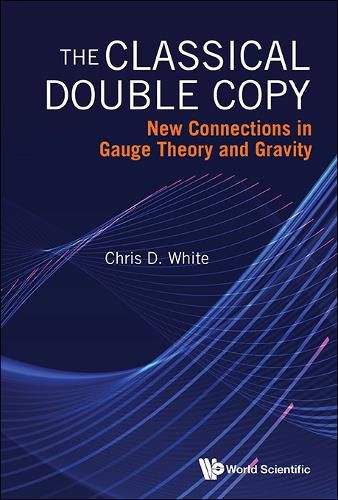Readings Newsletter
Become a Readings Member to make your shopping experience even easier.
Sign in or sign up for free!
You’re not far away from qualifying for FREE standard shipping within Australia
You’ve qualified for FREE standard shipping within Australia
The cart is loading…






This title is printed to order. This book may have been self-published. If so, we cannot guarantee the quality of the content. In the main most books will have gone through the editing process however some may not. We therefore suggest that you be aware of this before ordering this book. If in doubt check either the author or publisher’s details as we are unable to accept any returns unless they are faulty. Please contact us if you have any questions.
Our current understanding of nature is in terms of matter that is acted on by forces. There are four fundamental forces, of which three are described by so-called gauge theories, a type of quantum field theory. The fourth force, gravity, is best described by general relativity, and our traditional ways of thinking about gauge theories and gravity look completely different from each other.In recent years, an exciting new correspondence called the 'double copy' has emerged, which suggests that the above theories may be much more closely related than previously thought. Inspired by previous work in string theory, it originated in the study of how particles interact, but has since been generalised to show that many gravitational quantities can be simply obtained by recycling simpler gauge theory results. This has significant practical applications - such as new calculational tools for astrophysics - but is also of conceptual importance, in suggesting that our current ways of thinking about fundamental physics are hiding a vast underlying structure.This book reviews our current theories of fundamental physics, before describing in detail how the double copy was discovered, how it can be applied to different types of object in gauge or gravity theory, and what its current and future applications are. No prior knowledge of quantum field theory or string theory is assumed, such that the book will be of interest to a broad audience of physicists and mathematicians.
$9.00 standard shipping within Australia
FREE standard shipping within Australia for orders over $100.00
Express & International shipping calculated at checkout
This title is printed to order. This book may have been self-published. If so, we cannot guarantee the quality of the content. In the main most books will have gone through the editing process however some may not. We therefore suggest that you be aware of this before ordering this book. If in doubt check either the author or publisher’s details as we are unable to accept any returns unless they are faulty. Please contact us if you have any questions.
Our current understanding of nature is in terms of matter that is acted on by forces. There are four fundamental forces, of which three are described by so-called gauge theories, a type of quantum field theory. The fourth force, gravity, is best described by general relativity, and our traditional ways of thinking about gauge theories and gravity look completely different from each other.In recent years, an exciting new correspondence called the 'double copy' has emerged, which suggests that the above theories may be much more closely related than previously thought. Inspired by previous work in string theory, it originated in the study of how particles interact, but has since been generalised to show that many gravitational quantities can be simply obtained by recycling simpler gauge theory results. This has significant practical applications - such as new calculational tools for astrophysics - but is also of conceptual importance, in suggesting that our current ways of thinking about fundamental physics are hiding a vast underlying structure.This book reviews our current theories of fundamental physics, before describing in detail how the double copy was discovered, how it can be applied to different types of object in gauge or gravity theory, and what its current and future applications are. No prior knowledge of quantum field theory or string theory is assumed, such that the book will be of interest to a broad audience of physicists and mathematicians.